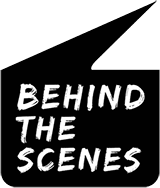Barriers to effective communication can be easily avoided once you know what to look out for.
A bit like computers, we all run on our own unique software that is programmed based on our cumulative experiences to date and what we know and understand to be ‘the norm’ as a result.
This software acts as our frame of reference; the lens through which we see the world. Much like the lens of this camera – this lens comes with filters that colour and shape how we communicate, how we send and receive information.
Filters as Barriers
Some communication filters are easy to identify. Our age, our gender, race, ethnicity, cultural background, religion, language, education and work experience for example.
Others however can be a little harder to determine.
Our values and the assumptions that we make.
Our communication style.
Our inner dialogue or self-talk. That little voice in our heads that pops up throughout the day, giving a running commentary about ourselves, others, the world around us and the situations we find ourselves in can influence how we act or react to a person or scenario.
Then there’s the power dynamic that exists between the sender and receiver of the information, and the perceived credibility that exists on either side.
Recognise and Remove Bias
As a leader, the more aware you can become of your own communication filters, the more you can take steps to control and remove any bias or distortion these filters may be having in how you send and interpret messages, thereby preventing them from becoming barriers to effective communication.
Similarly, the more you can try to understand the communication filters that might be at play amongst your team, customers, peers and other stakeholders, the more you can aim to develop and deliver your message in a way that cuts through these filters to resonate and connect with your audience.
Seeking to identify both your own communication filters and those of your stakeholders is not about making assumptions, judgements or stereotyping. It’s about recognising if and when these filters are coming into play during your communication exchanges and removing them from the process so they don’t become a barrier to you achieving communication success.
